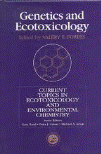Papers in the Biological Sciences
Date of this Version
6-23-2009
Abstract
Background: Variation in carrying capacity and population return rates is generally ignored in traditional studies of population dynamics. Variation is hard to study in the field because of difficulties controlling the environment in order to obtain statistical replicates, and because of the scale and expense of experimenting on populations. There may also be ethical issues. To circumvent these problems we used detailed simulations of the simultaneous behaviours of interacting animals in an accurate facsimile of a real Danish landscape. The models incorporate as much as possible of the behaviour and ecology of skylarks Alauda arvensis, voles Microtus agrestis, a ground beetle Bembidion lampros and a linyphiid spider Erigone atra. This allows us to quantify and evaluate the importance of spatial and temporal heterogeneity on the population dynamics of the four species.
Results: Both spatial and temporal heterogeneity affected the relationship between population growth rate and population density in all four species. Spatial heterogeneity accounted for 23–30% of the variance in population growth rate after accounting for the effects of density, reflecting big differences in local carrying capacity associated with the landscape features important to individual species. Temporal heterogeneity accounted for 3–13% of the variance in vole, skylark and spider, but 43% in beetles. The associated temporal variation in carrying capacity would be problematic in traditional analyses of density dependence. Return rates were less than one in all species and essentially invariant in skylarks, spiders and beetles. Return rates varied over the landscape in voles, being slower where there were larger fluctuations in local population sizes.
Conclusion: Our analyses estimated the traditional parameters of carrying capacities and return rates, but these are now seen as varying continuously over the landscape depending on habitat quality and the mechanisms of density dependence. The importance of our results lies in our demonstration that the effects of spatial and temporal heterogeneity must be accounted for if we are to have accurate predictive models for use in management and conservation. This is an area which until now has lacked an adequate theoretical framework and methodology.


Comments
Published in BMC Ecology 2009, 9:18 doi:10.1186/1472-6785-9-18 This article is available from: http://www.biomedcentral.com/1472-6785/9/18
Copyright © 2009 Sibly et al; licensee BioMed Central Ltd. This is an Open Access article distributed under the terms of the Creative Commons Attribution License.